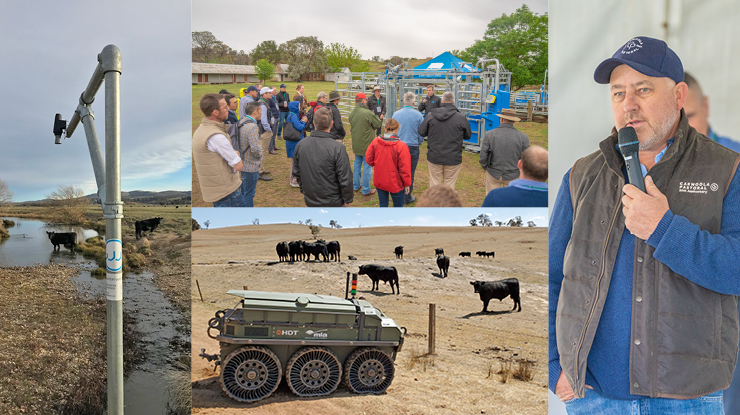 Clockwise from far left: remote water monitoring on Carwoola; a demonstration of ag-tech at Carwoola during MLA's Red Meat 2018; Darren Price presenting at Red Meat 2018; an autonomous vehicle undergoing testing for on-farm use.
Clockwise from far left: remote water monitoring on Carwoola; a demonstration of ag-tech at Carwoola during MLA's Red Meat 2018; Darren Price presenting at Red Meat 2018; an autonomous vehicle undergoing testing for on-farm use.
Ag-tech pilot delivering results
Despite the Carwoola Pastoral Company ag‑tech project only just passing its halfway mark, the new technologies explored in this pilot are already providing a return on investment and guiding management decisions.
Around 400 devices from different providers – ranging from smart cattle tags to soil probes – are being put through their paces in a commercial setting.
Here, Darren Price, Price Rural Management, who is overseeing the project, provides a snapshot of some of the many cost and time‑saving benefits the business has experienced from these ag‑tech solutions, along with some of the lessons learned so far.
Saving time and money on water runs
With 40 water sensors installed on dams, troughs and tanks at ‘Carwoola’ alone and many more across the company’s other three properties, this technology has already significantly reduced time and money spent on checking water points.
A typical water run at Carwoola used to involve checking five tanks, nine troughs and six dams. It took around an hour to complete this 14km water run, which needed to be done seven days a week in summer – costing the business just under $20,000 a year.
Darren said the water sensors have reduced the need to check troughs manually by 70%.
“That’s quite a good payback in 12 months,” he said.
“We still do physical checks, obviously, but it gives me a really good early warning system on issues.”
He said another advantage was the ability to check water points remotely.
With 8km of Molonglo River running through Carwoola, the project also installed flood level detection sensors as an early warning system so livestock can be moved to safer paddocks if required.
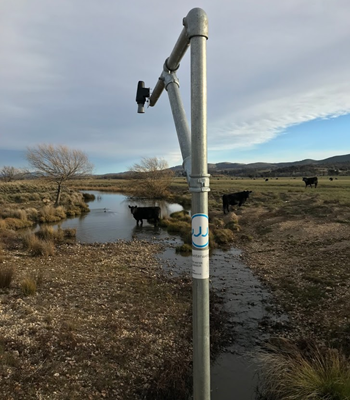
Remote water monitoring technology at Carwoola.
Labour efficiency
Carwoola Pastoral Company’s feeder cattle business requires cattle to be weighed every four to six weeks, in mob sizes from 100–160 head.
Manual weighing and drafting previously required three staff, averaging 60–80 head/hour.
However, the installation of an air‑operated, three‑way auto‑drafting system with an auto RFID scanner has lifted the drafting rate to 200 head/hour and removed the need for one labour unit, freeing employees up to do other tasks.
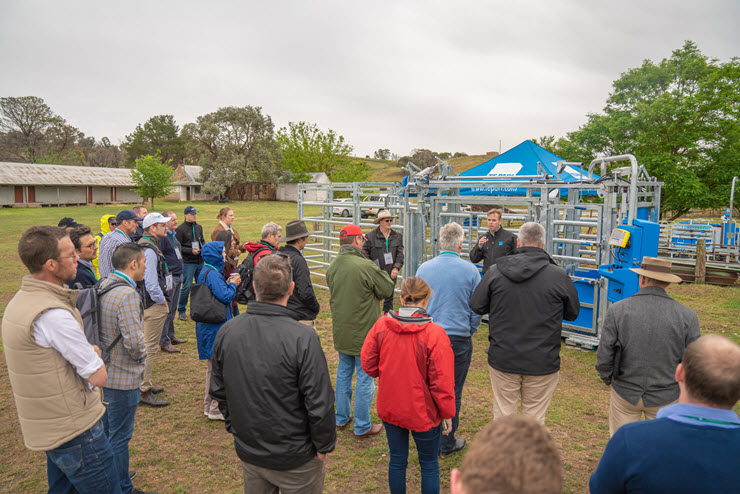
Carwoola hosted the Digital Tour at MLA's Red Meat 2018 event. Producers came from far and wide to see the ag-tech on display.
Smart monitoring
Smart cattle tags are being trialled in this project, creating the ability to track bulls during joining as well as to provide insights into grazing patterns.
“It’s very quick and easy to get a snapshot of what the herd’s doing,” Darren said.
“I think the biggest return on investment and business change can come from using the smart tags with bulls, as it tracks how far an animal has moved in a period of time.
“We can identify bulls which aren’t moving about the herd, assess if they have any issues and swap them out. The potential to increase our calving percentage by even 5% is a big advantage.”
Darren is also using the smart tags to gather useful management information by group tracking mobs to analyse how they’re using supplement stations.
“It’s highlighted we may need to move some lick feeders to get them across more country.”
From the battlefield to the farm
An unmanned autonomous vehicle is also undergoing testing at Carwoola. The vehicle (pictured below) was designed for the US military to carry supplies to troops in combat has been customised by HDT Expeditionary Systems, in partnership with MLA, to be used on Australian grazing properties.
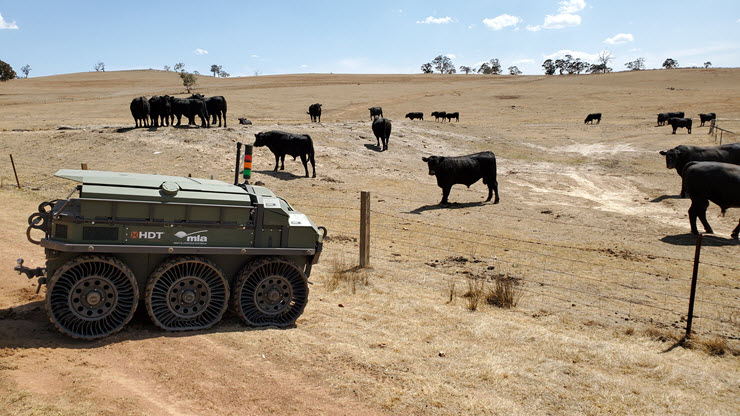
An unmanned autonomous vehicle undergoing testing at Carwoola.
MLA Manager – Supply Chain Technology Innovation, Darryl Heidke, said the six‑wheel vehicle was put through its paces at Carwoola in January, to test its robustness under agricultural conditions.
“The autonomous vehicle has potential to undertake a range of tasks on‑farm, such as detecting weeds, towing feed, fuel and water trailers, and moving livestock,” Darryl said.
So, has it run into any fences? Darryl has good news.
“It has a collision avoidance system. HDT input GPS points into the vehicle so it can track its way around the property, performing tasks, without incident.”
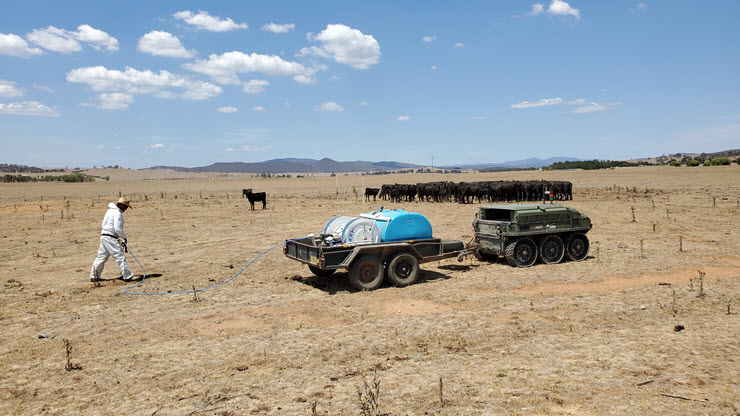
An autonomous vehicle is being tested at Carwoola to evaluate how producers could use them for on-farm tasks such as weed control.
Accurate irrigation scheduling
Darren is using soil probes to ensure greater accuracy in scheduling irrigation events for the two 23ha centre pivots on Carwoola, which irrigate lucerne and perennial rye.
“It’s expensive to irrigate so we want to change the way crops are reacting so we can maximise water use efficiency,” Darren said.
“I haven’t seen a stressed lucerne plant since I’ve been working with these sorts of tools. It’s really starting to maximise our growth.”
Satellite pasture management
“As a grazing business, Carwoola is constantly measuring pastures and we spend considerable time – an average of six hours/ month/property – assessing them,” Darren said.
Using satellite pasture management technology could save the business around $8,500 in pasture monitoring.
“The beauty of this technology is I’m able to assess this every week.
“Because it’s re‑evaluating and reporting regularly, when we get busy with feeding, this enables me to continue to do everything else I have to do and also do our pasture measurements.
“I can check it while I’m eating my Weet‑Bix in the morning. If we can then connect this to a feed budgeting tool, we’re getting some really powerful information.”
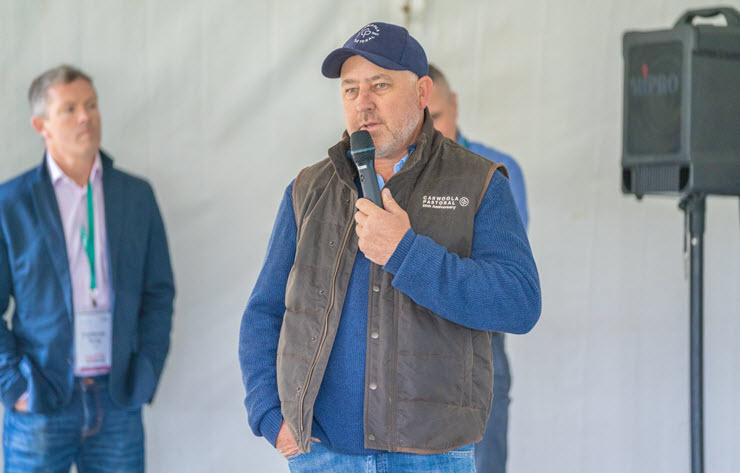
Darren Price presenting at MLA's Red Meat 2018 Digital Tour, hosted by Carwoola.
Lessons learned
- Don’t expect to just buy any sensor off the shelf and get results – be prepared to invest in the right tool for the job.
- Consider the realities of where you are locating technologies as devices will require protection to prevent damage from livestock.
- The ability to monitor your business even when you’re off‑farm is a huge comfort.



